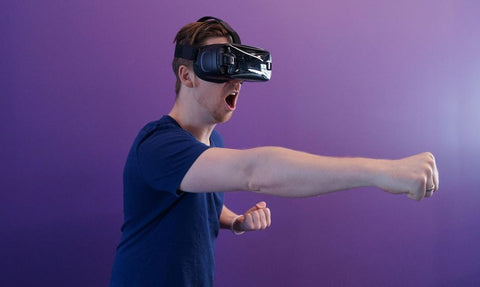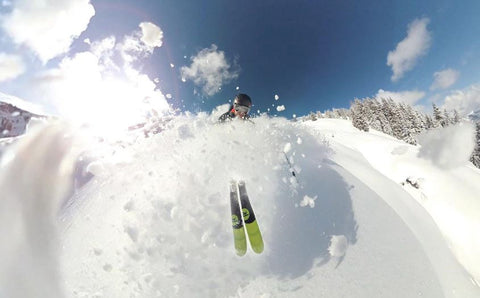As you probably know, there’s currently a lot going on in the Virtual Reality (VR) and Augmented Reality (AR) fields. Many top companies are experimenting with creating entirely virtual worlds like Meta and its Metaverse, where you can live a virtual life, enjoy virtual concerts and even have business meetings.
Thanks to heavy funding of VR projects, improvement of VR devices and innovative ideas, this concept is here to stay. It will probably be incorporated slowly into everyday life.
In this article, we’ll explore the different ways in which VR is being used for more than video games, including, of course, snowsports and other winter-related activities.
Casinos, Video Games, and Sports Go Virtual
Some people believe that VR is related to video gaming, and it’ll never breach that barrier. While it’s true that video games are the perfect realm for VR experiences, the technology goes way beyond that.
While explaining how VR is being used for medicine, hospitality, and other sectors would go beyond the scope of this article, suffice it to say surgeons might be able to perform operations remotely in the future. The same goes for other fields. The idea is to simulate natural conditions and enhance your experiences.

For example, in the future, instead of using your smartphone to enjoy live casinos, a VR device will allow you to walk through the virtual casino itself. You’ll have a 360-degree view of the halls, decorations and even music, besides the games.
Video games already offer a virtual world to players, so the experience can be significantly enhanced with VR.
This is especially true for first-person view games, where the action is already immersive, which takes us to sports.
Sports are a perfect outlet to shape and deploy VR technologies. This is not only because it’s much more exciting to play sports with VR goggles than a flat screen. It’s also because sports require other virtual elements such as accessories, feeling the strength of your batting, or in the case of skiing, emulating the course’s conditions.
Skiing and VR, A Match Made in Heaven?
In case you didn’t know, ski resorts already use VR to attract customers. One of the top ways they take advantage of VR is to offer virtual instruction. There are ski simulators that, thanks to GPS, can reproduce ski courses worldwide.
Simulators such as the SkyTechSport offer 6K resolution and are complex devices capable of replicating the relevant sensations and G-force of slope descending for each particular slope. Not only that, but it can also replicate the different types of snow by alternating the physical response of skis and snowboards.
As you can see, the tech is pretty advanced as it currently is, and it’s only getting more sophisticated.
There’s a lot to emulate when it comes to skiing and other winter sports, which provides an excellent outlet for researchers and engineers.
For instance, a full skiing suit could have sensors that monitor your movements and provide more accurate action in the simulation.
This suit could also offer sensory feedback, including pressure and even temperature emulation.
These experiences are not only valid for training skiers. It’s also an excellent way for resorts to offer these activities all year round or even allow people far from ski resorts to enjoy the sport. It has the potential to open up skiing for everyone.
However, there’s still much to be done for it to be popular if it ever happens.
This is because VR works with expensive tech, which is even more true for skiing since the gear is also part of the device.
AR for Mixed-Reality Skiing
Augmented Reality is another hot topic when it comes to Virtual Reality. In this case, a device “enhances” real-life experiences by offering additional details or activities. For example, a restaurant might offer an AR menu where you use your AR device to get a 3D view of a dish.
When it comes to skiing, you might be able to use your AR device to check the slope length, for instance. It can also offer an on-screen view of weather conditions, wind velocity and other details to enhance your experience.

Additionally, companies can use AR for marketing. So, you might stumble upon a ski-supplies manufacturer logo as you use the device.
The most exciting aspect of AR is that the tech is available for anyone who owns a smartphone and is ready to be implemented ingeniously.
In Conclusion
VR and AR can potentially change snowsports and even bring new related activities to such disciplines.
There are already incredible achievements in terms of ski simulation, but it’s only the beginning.
As the technology evolves and its adoption rate increases, you’ll be likely surprised at the many innovative ways it can enhance your ski activities. Still, there’s a long way to go for it to become an everyday reality.
ABOUT THE AUTHOR
Aleksandra Djurdjevic
Senior Content Creator
Aleksandra Djurdjevic is a senior writer and editor, covering snowboarding, skiing and trends in outdoor winter activities. She has previously worked as ESL teacher for English Tochka. Aleksandra graduated from the Comparative Literature department at the Faculty of Philosophy in Serbia. Aleksandra’s love for the mountains, getting out in the snow on her board, season after season, seeking wild snow adventures across the globe helps her continue to be a top expert at CSG.






